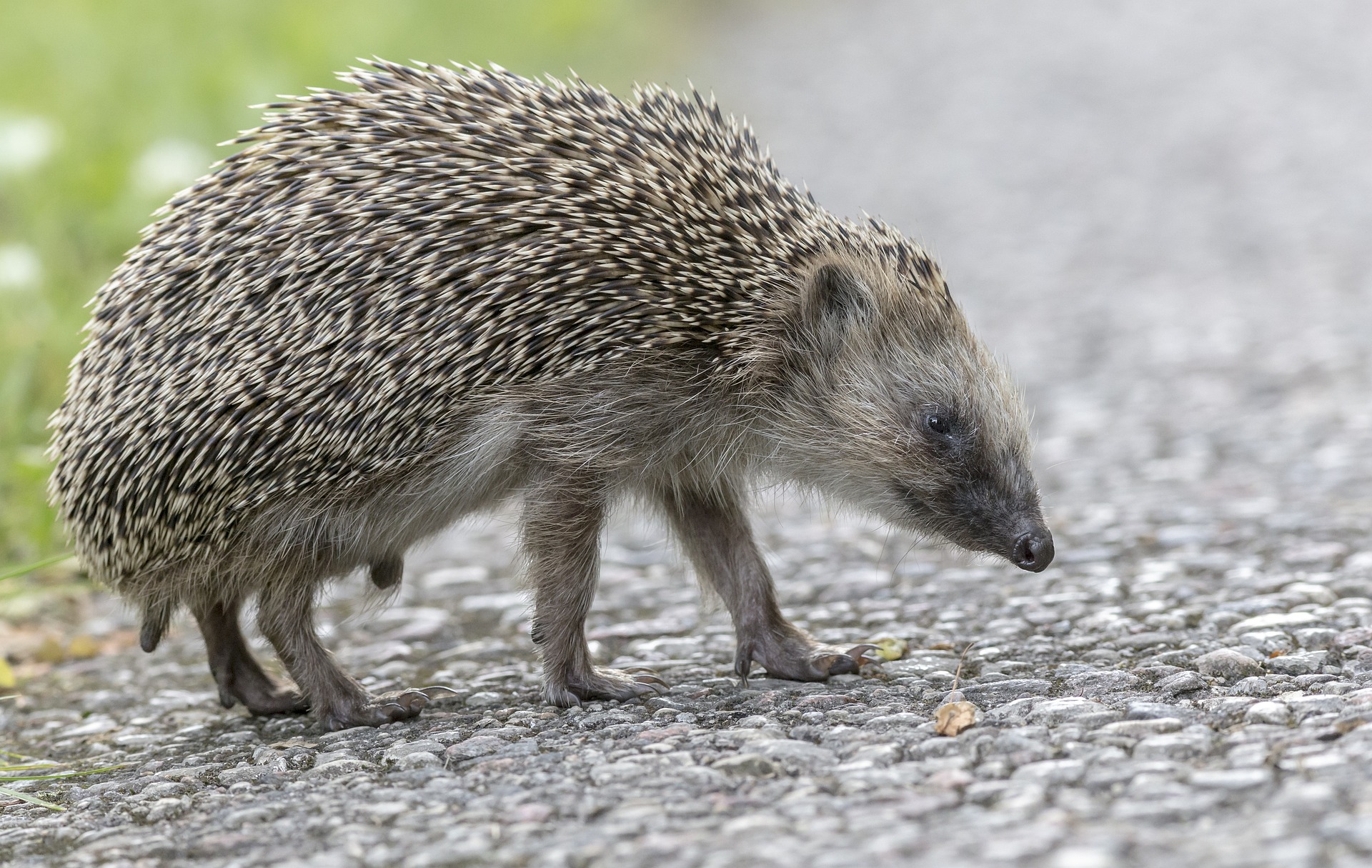The European hedgehog (Erinaceus europaeus) is a small mammal known for its distinctive spiny coat and nocturnal habits. Here are some key features and characteristics of the European hedgehog:
- Appearance: European hedgehogs have a stout body covered in short, brownish-gray fur and thousands of sharp spines made of keratin. These spines serve as a defense mechanism, as the hedgehog can curl into a tight ball when threatened, protecting its vulnerable underside. They have small eyes and ears, a pointed snout, and a short tail.
- Habitat: European hedgehogs are found in a variety of habitats, including woodlands, grasslands, hedgerows, gardens, parks, and suburban areas. They prefer areas with dense vegetation and cover, where they can find shelter and forage for food. They are commonly found in both rural and urban environments.
- Distribution: European hedgehogs are native to Europe, from the Iberian Peninsula in the west to Russia in the east, and from Scandinavia in the north to the Mediterranean in the south. They have also been introduced to some regions, including New Zealand, where they are considered invasive species.
- Diet: European hedgehogs are omnivorous, with a diet that primarily consists of invertebrates such as insects, worms, slugs, and snails. They also eat fruits, berries, seeds, and occasionally small vertebrates such as frogs, mice, and birds’ eggs. They use their keen sense of smell to locate food while foraging at night.
- Behavior: European hedgehogs are primarily nocturnal, meaning they are most active during the night. They are solitary animals, except during the breeding season when they seek out mates. They are generally shy and secretive, preferring to avoid confrontations with predators by hiding or curling into a ball.
- Reproduction: Breeding occurs in the spring and early summer, with females giving birth to a litter of 3-7 hoglets after a gestation period of around 30-40 days. The hoglets are born blind and hairless, but their spines start to emerge within a few hours. They are nursed by their mother for several weeks before becoming independent.
- Conservation: European hedgehog populations are declining in many parts of their range due to habitat loss, fragmentation, pollution, road traffic, and predation by introduced species such as foxes and badgers. They are listed as a species of least concern on the IUCN Red List, but conservation efforts are needed to protect and restore their habitats.
Overall, the European hedgehog is a charming and iconic mammal species, valued for its role in controlling insect populations and as a beloved garden visitor. Efforts to conserve and protect their habitats are crucial for their long-term survival.
Views: 11
Subscribe to the newsletter:
